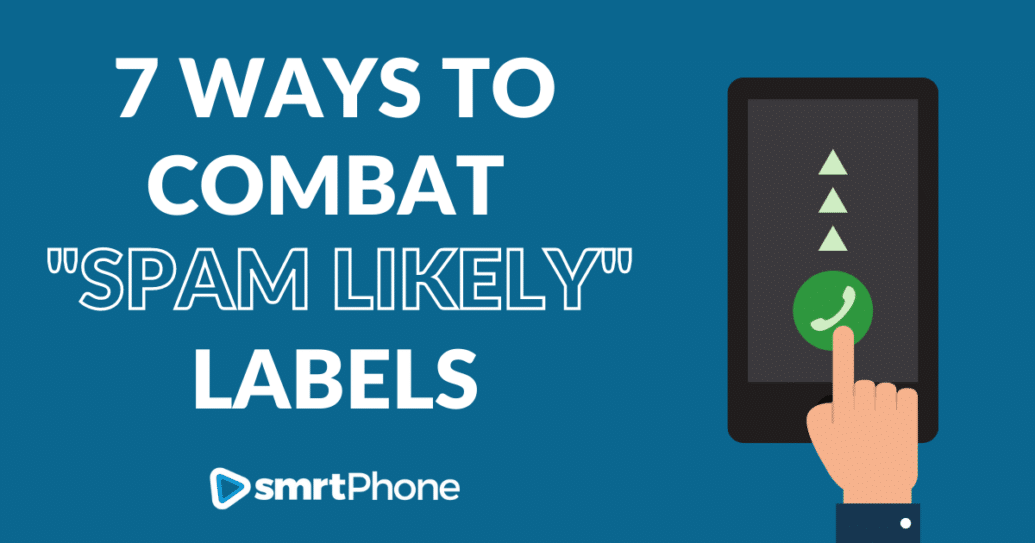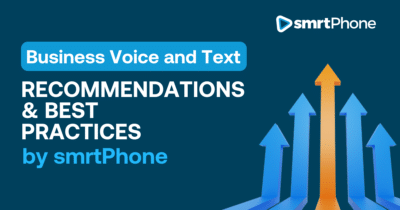Follow these practical tips to stop your phone numbers being labeled as spam.
For businesses that rely on calls to generate interest, speak to leads, and close deals, having a phone number marked SPAM or Scam Likely can be a serious blow. These data flags can seem to come and go at random, with little recourse for business owners. It’s a helpless feeling to have some of your most valuable business assets and the conduit to your target audience – phone numbers – are suddenly limited in reach.
Questions abound: How did my phone number get marked as SPAM, even though I’m following all rules and regulations? Do I have to give up my phone number now that it is marked spam? How do I clean my phone numbers?
Don’t worry! While discovering that one of your business phone numbers has been mislabeled as spam is stressful, all hope is not lost.
There are some tried and true methods to reduce your risk of being labeled spam, clean up phone numbers that have been flagged, and return you to your expected response rates. We’ll walk you through it.
First, you need a fundamental understanding of how phone numbers get flagged in the first place.
How Spam Scoring Works
As we outlined in our previous blog post (How Do Phone Numbers Get Marked as Spam?>>), each provider uses a proprietary algorithm to determine whether the consumer sees the typical caller ID information or your call is marked as “Spam Risk”, “Scam Likely”, “Potential Spam” or other negative labels.
While the algorithms are not published publicly, we know data such as call volume, answer rate, call duration and other indicators hint to the carriers whether these are wanted phone calls from a specific number. For example, if a high percentage of calls from a specific phone number go unanswered, the algorithm is going to assume the calls are uninvited. Or if the call duration is a few minutes or longer, the data will show it is an engaging — and therefore welcomed — conversation.
The biggest challenge to outbound sales calls is that these scoring systems are not centralized. Because it varies from carrier to carrier, you can be marked spam on one and free and clear on another.
The good news is that you can still influence how your numbers are rated. Below are our tips for things you can do today and every day to lower your chances of your phone number being marked as spam.
7 Things You Can Do Now to Reduce Risk of Being Marked Spam Likely
- Register your phone numbers with data analytics providers. There are independent data registry providers who feed call analytics engines for carriers. Free Caller Registry and Call Transparency are both free and cover the largest mobile carriers in the U.S. (including their MVNO subsidiaries.) Getting your numbers registered with these two databases will cover the majority of contacts in your database.
- Enroll in STIR/SHAKEN to enable certified Caller ID that tells contacts they can trust that you are who you say you are. STIR/SHAKEN is an FCC mandated protocol that helps receiving carriers know if the Caller ID information is legitimate or spoofed/faked. While spoofing has long been illegal, it’s been hard to stop because there is little to no evidence about who is truly behind the fake Caller ID information. This new service stops scammers from getting away with faking Caller ID. At a high level, each number receives a certificate of authenticity and the receiving carriers can match the Caller ID information with that certificate to confirm they match – meaning the caller is who they say they are. For calls where the certificate does not match the Caller ID information, carriers mark them as spam or even block them from going through. Registering your numbers is like getting an identification card for your phone numbers that proves your identity and increases consumer trust. smrtPhone clients can register for STIR/SHAKEN for free in our Trust Center.
- Be strategic with number of lines you power dial. When power dialing cold lead lists, limit the number of power dialing lines to two (2) and try to rotate numbers. Although you won’t know which carriers your leads use, if a carrier sees a single phone number dialing in quick succession to their customer base and being rejected, it impacts their view of the number. When you are doing warm follow ups that have a greater hit rate, using all four lines is fine. smrtPhone makes this easy with our smrtDialer multi-line power dialing product that allows you to not only select the number of lines used per campaign, but also allows you to create number pools to cycle your phone numbers and keep each one fresh.
- Park your numbers occasionally. No one wants to give up phone numbers that have been used on printed marketing materials. You can’t risk missing out on those inbound inquiries. However, giving your numbers an occasional rest can help decrease their spam scores. Park your numbers so inbound calls can still be received, but pause using them for outbound outreach. Telecom providers typically hold recycled phone numbers for 120 days to clear call history before reissuing them, but we’ve seen success with even just 3-4 weeks of parking.
- Comply with all laws, regulations, and provider policies. While this may be a no-brainer, we would be remiss to not mention it. Especially in the U.S. where phone calls are governed a both a federal and state/regional level, it is important to understand the guidelines you must follow. Don’t make assumptions. Do your research or hire a specialist to guide you through the requirements for consent, opt-in, DNC compliance, and cold outreach.
- Diversify your marketing mix. This might be strange advice coming from a telecom business, but make sure you aren’t relying too heavily on phone and text. The best leads are inbound leads, where you have an interested audience reaching out to you instead of manually chasing them down. Not only will it ensure you have all of the proper opt-in consent you need, but warm leads are much more likely to close. A holistic marketing approach that builds your brand, creates a nurturing customer experience, encourages word of mouth referrals, and builds a pipeline of friendly leads is going to result in the most success. Phone calls are an important – but not the only – ingredient in success. A healthy balanced portfolio of lead generating activities including flyers, yard signs, advertising, events, and, yes, phone calls and text messaging, is more scalable and sustainable than a single channel approach.
- Don’t panic. It’s hard to not stress when you hear that your phone numbers that you’ve printed on 1000 mailers has been marked as Spam Likely by one of the carriers. But remember: it doesn’t mean it is showing that way for all consumers and it doesn’t mean it’s permanent. Take a deep breath, following the tips on this list, and make sure you continue to follow sound business practices for outbound sales calling. You are not the only business operating in this new environment; all businesses are facing the same increased scrutiny. It’s part of doing business. As the industry shifts, believe in your ability to adapt and achieve and continue to improve and press forward.
Bonus tip: Follow the Golden Rule. As you put on your professional hat and make business calls, don’t take off your consumer hat. Imagine you are the recipient of the phone call you are about to place – how would you want to be treated? The better you treat your contacts, the less likely they are to lodge complaints about you. A solid reputation is remarkably more profitable in the long run than trying to play games, be sneaky, or force a situation. Build your brand as a honest, transparent, caring provider by treating others as you want to be treated.



